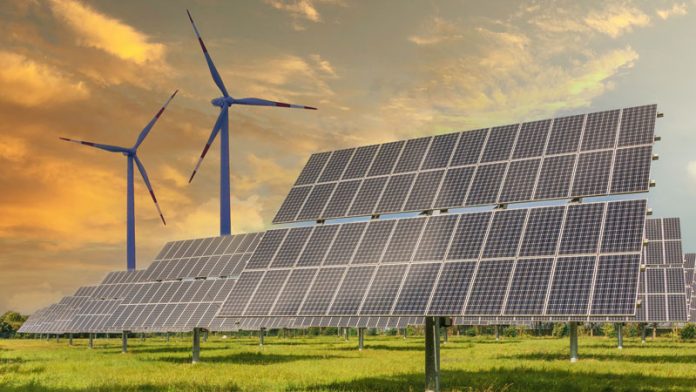With a collective focus to transform the energy sector by reducing reliance on hydrocarbon resources for power generation, Oman is taking strong strides in the solar and wind energy sectors as they aim to hit the 20 per cent dependency mark on renewables by 2030.
It seems incredible to imagine that a 13mn sq.m desert expanse in the Wilayat of Ibri that was an uninhabited area only three years ago is now home to about 2,000 robots attending to 1.05mn dual-sided solar panels – a power facility called the Ibri II Solar Power Plant. But, the determination to build and develop in Oman has indeed changed fiction into reality.
Ibri II IPP, which opened earlier this year, has a capacity to serve 50,000 households and contributes to the reduction of CO2 emissions by 340,000 tonnes per annum.
The project spearheads Oman’s drive to utilise renewable energy transformation to enhance the security of power for a sustainable future and achieve a balance between requirements of development and natural resources needed for economic growth, while at the same time diminishing the impacts of climate change.
As a result, the daily output of electricity from renewable energy sources stood at 650MW – a step forward to reaching an output of 3,350MW by 2027.
The country’s ambitious plan envisages using renewable energy to operate a wide range of projects that give priority to the environment and natural resources within Oman Vision 2040. The vision implements a strategic approach based on the creation of efficient, balanced and flexible ecosystems that enhance the national economy.
This transformation is projected to raise the consumption of renewable energy and the reduction of reliance on natural gas in producing electricity. It also aims to augment the proportion of renewable energy consumption by 20 per cent by 2030, besides ameliorating Oman’s environmental performance index so that the country would enter the sphere of the 40 best states in the world.
Oman’s first renewable energy project was Dhofar Wind Power Station, set up in 2019, with a capacity of 50MW, enough to cover 16,000 households and contribute to the reduction of CO2 emissions by 116,000 tonnes a year.
In 2020, Ameen Solar Power Station was opened, with a capacity of 100MW, enough to cover 15,000 households and cut CO2 emissions by 225,000 tonnes per annum.
Manah 1 and Manah 2 solar power plants figure among the topmost projects in the renewable energy sector. With their 1,000MW capacity, they cut down CO2 emissions by 680,000 tonnes a year.
They are scheduled to begin commercial operations by the end of 2024. This is in addition to a concentrated solar thermal storage (STS) facility coming up in the vicinity of the Special Economic Zone in Duqm (SEZAD).
Oman is also planning to set up a wind farm, with a capacity of 100MW in the Wilayat of Jalan Bani Bu Ali in the Governorate of South A’Sharqiyah, along with two wind power projects (capacity 160-200) in the Wilayat of Duqm in the Governorate of Al Wusta.
There are also plans to implement a project for the development of the Dhofar 2 Wind Power Farm to help produce 100MW.
Last January, Oman launched the Middle East’s first spot energy market. The step was aimed to liberalise the electricity market and attract more renewable energy investments.






